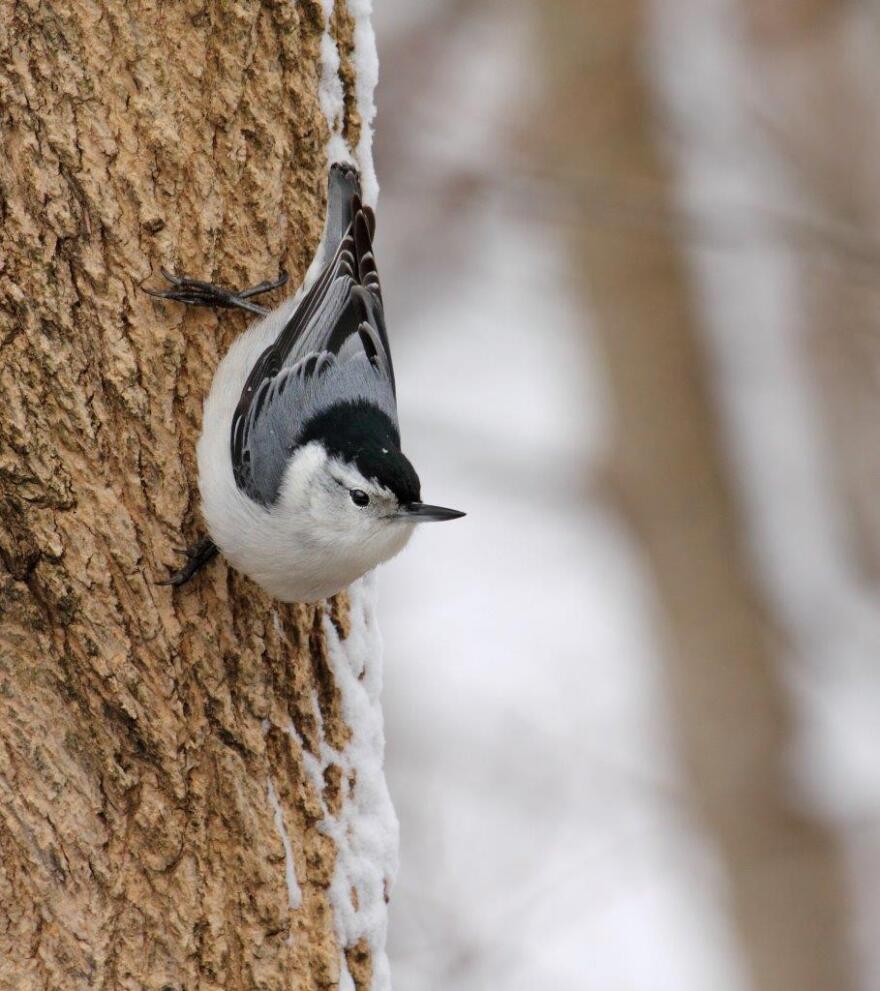In the frozen fastness of a winter forest, devoid of green plants and insects, winter tree bark provides important winter insect habitat and a food pantry for forest birds and small mammals hunting for tiny insects or seeds.
Bark is distinctive: long loose plates of bark distinguish aptly-named shagbark hickory. Black cherry features small scales - like burnt potato chips. White birch is wrapped in a tight white envelope of light-reflecting bark that diminishes the damage of thawing and re-freezing. Beneath loose bark, lies a hidden universe of hibernating insects. Pupae rest in suspended animation inside cocoons. Larvae await the pulse of spring inside tiny frozen eggs. Resident birds spend the better part of winter days gleaning bark for frozen spiders and insect eggs or bits of lichen growing on tree bark.
In deep snow, tree trunks create a different type of pantry. Sun rays warm dark bark and melt snow to create “wells” at the base of trees These hollows in the forest floor catch small wind-blown seeds or tumbleweeds of dislodged lichens. Mice and squirrel tracks lead to melt wells for food and shelter. On the white tablecloth of the open snowpack, these small mammals are pitilessly exposed to predators.
While the canopy remains dormant, the topography of tree trunks is alive, providing both food and shelter in this winter-simplified landscape. Pay close attention to tree trunks in winter and you may find protective bark is kinder than winter’s cruelest bite!








